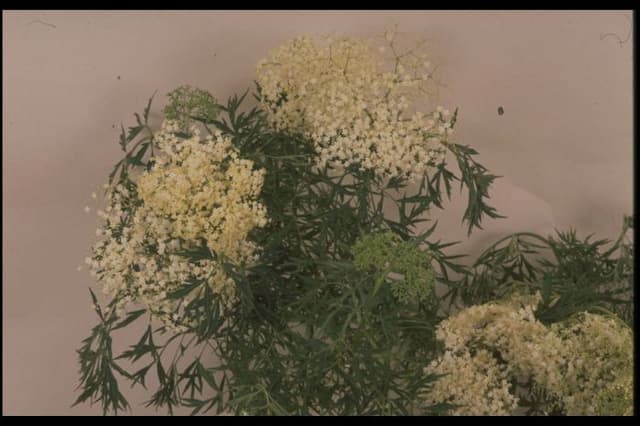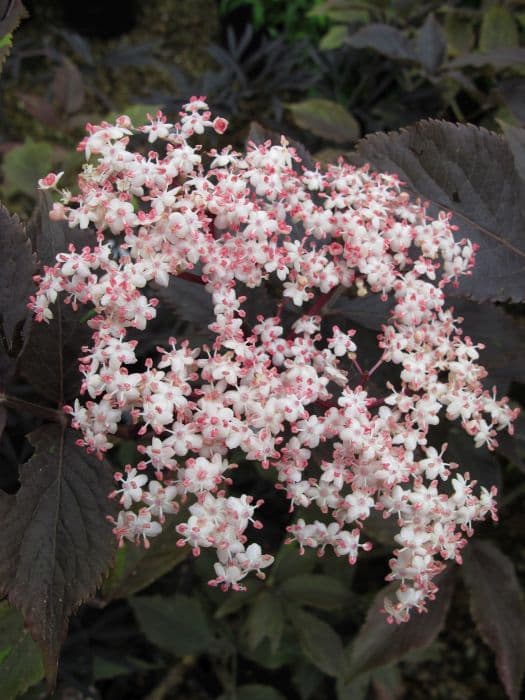Koreanspice viburnum Viburnum carlesii

ABOUT
Viburnum carlesii, commonly known as Korean spice viburnum, is a deciduous shrub that is widely appreciated for its fragrant spring blossoms and appealing form. It has a multi-stemmed habit, with branches that tend to arch gracefully. The leaves are broad, ovate in shape, with toothed edges, and they develop a deep green color during the growing season. In fall, the foliage often transitions to beautiful reddish hues, adding seasonal interest to the landscape. One of the most striking features of the Korean spice viburnum is its flowers. The blooms are formed in dense, spherical clusters, known as cymes, and they are usually a soft shade of pink when buds and then change to white as they fully open. The flowers emit a rich, spicy fragrance that can be detected from a distance, making it a favorite among gardeners for sensory gardens or near outdoor living spaces. Following the blooming period, the shrub may produce ornamental berries that are initially red, turning to black as they ripen. The bark is somewhat rough and furrowed, adding texture and winter interest when the branches are bare. The overall appearance of Korean spice viburnum is lush and rounded, with a sturdy, attractive presence that makes it a versatile choice for garden borders, hedges, or as a specimen plant in landscape design.
About this plant
 Names
NamesFamily
Adoxaceae.
Synonyms
Koreanspice Viburnum, Korean Spice, Arrowwood.
Common names
Viburnum carlesii Hance.
 Toxicity
ToxicityTo humans
Korean Spice Viburnum (Viburnum carlesii) is generally not considered highly toxic to humans. However, ingestion of parts of this plant, particularly in large amounts, might lead to mild stomach upset, nausea, vomiting, or diarrhea. In most cases, the symptoms would not be severe, but it is always advisable to exercise caution and prevent ingestion, especially in children and vulnerable individuals, and to seek medical advice if any symptoms occur.
To pets
Korean Spice Viburnum (Viburnum carlesii) is also not considered highly toxic to pets, but it can still cause mild gastrointestinal distress if ingested. Symptoms in pets might include vomiting and diarrhea, similar to humans. If a pet consumes parts of this plant, especially in large quantities, it is advisable to monitor them for any signs of distress and consult a veterinarian for guidance.
 Characteristics
CharacteristicsLife cycle
Perennials
Foliage type
Deciduous
Color of leaves
Green
Flower color
Pink
Height
4-6 feet (1.2-1.8 meters)
Spread
4-7 feet (1.2-2.1 meters)
Plant type
Shrub
Hardiness zones
4-8
Native area
Korea
Benefits
 General Benefits
General Benefits- Aesthetic Appeal: Adds visual interest to gardens with its showy, fragrant flowers in spring and vibrant foliage in autumn.
- Wildlife Attraction: The berries attract birds, providing them with a source of food, while the flowers can attract pollinators like butterflies and bees.
- Low Maintenance: Requires minimal care once established, making it suitable for gardeners of all skill levels.
- Seasonal Interest: Offers year-round interest through its changing leaf colors, fragrant spring blooms, and berry production in fall and winter.
- Versatility: Can be used as a specimen plant, in borders, or as part of a hedging scheme, offering flexibility in landscape design.
- Tolerance: Shows a good level of resistance to common pests and diseases, potentially reducing the need for chemical treatments.
- Privacy Screen: Dense growth habit makes it an excellent choice for creating natural privacy barriers in the landscape.
 Medical Properties
Medical PropertiesThis plant is not used for medical purposes.
 Air-purifying Qualities
Air-purifying QualitiesThis plant is not specifically known for air purifying qualities.
 Other Uses
Other Uses- Viburnum carlesii, commonly known as Koreanspice viburnum, can be employed as a natural insect repellent in gardens due to its strong fragrance, which can deter certain insect pests.
- Its dense foliage provides excellent cover for birds and small wildlife, offering a safe haven from predators and harsh weather conditions.
- The strong structural branches of the Koreanspice viburnum can be used in wintertime decorations and wreaths, adding a rustic touch to holiday decor.
- This plant serves as a natural privacy screen when planted in rows or clusters, due to its thick and bushy growth habit.
- Its aromatic flowers can be harvested and dried to create potpourri, infusing indoor spaces with a pleasant scent reminiscent of spring.
- Fall foliage of Koreanspice viburnum, with its vibrant colors, is perfect for creating captivating autumnal landscapes in photography and painting.
- The textured bark of mature specimens can be used as a study subject for educational purposes, teaching about the different types of tree and shrub bark.
- Urban landscaping often incorporates Koreanspice viburnum as it is tolerant to pollution and can thrive in less-than-ideal city soil conditions.
- The berries of the Koreanspice viburnum can be used to create natural dyes for fabrics, offering a range of colors from green to pink shades depending on the mordant used.
- As a tool for teaching botany, Koreanspice viburnum exemplifies plant growth patterns, bud formation, and the lifecycle of perennial shrubs in educational gardens.
Interesting Facts
 Feng Shui
Feng ShuiThe Korean spice viburnum is not used in Feng Shui practice.
 Zodiac Sign Compitability
Zodiac Sign CompitabilityThe Korean spice viburnum is not used in astrology practice.
 Plant Symbolism
Plant Symbolism- Renewal and Rebirth: Viburnum carlesii, commonly known as Koreanspice Viburnum, blooms in the early spring, symbolizing the awakening of nature and the beginning of a new cycle of life.
- Perseverance and Strength: Koreanspice Viburnum is a hardy plant that can withstand a variety of conditions, representing the ability to persevere through challenges.
- Beauty and Elegance: With its beautiful clusters of pink to white flowers and appealing fragrance, this plant is often associated with beauty and the idea of maintaining grace under pressure.
- Connection and Communication: The sweet fragrance of Koreanspice Viburnum that attracts bees and other pollinators stands for the importance of relationships and effective communication in building a strong community.
 Water
WaterKorean Spice Viburnum requires consistent moisture, and it should be watered deeply about once a week, allowing the soil to dry out slightly between waterings. Provide roughly 1 inch of water per square foot, which equates to about 0.62 gallons per square foot every week. During hot spells or extended periods without rain, increase watering frequency to twice a week. Establishing plants may require more frequent watering until their root systems are fully developed. In the fall, taper off water to harden off the plant for winter.
 Light
LightKorean Spice Viburnum performs best in full sun to partial shade. It thrives in a location that receives at least 4-6 hours of direct sunlight per day, but it can also tolerate light, dappled shade. Avoid planting in deep shade, as this will reduce the plant’s flowering potential and can lead to a less robust growth habit.
 Temperature
TemperatureKorean Spice Viburnum is cold hardy and can withstand winter temperatures as low as -10 to -20 degrees Fahrenheit, but it grows best when the temperature ranges between 60 and 75 degrees Fahrenheit. It can handle brief spells of higher temperatures but should be protected from the extreme summer heat, especially in southern zones.
 Pruning
PruningPrune Korean Spice Viburnum immediately after flowering to maintain its shape and to promote new growth for next season's blooms. This plant blooms on old wood, so late pruning can remove the flower buds for the following year. Pruning once a year is sufficient, typically done in late spring or early summer.
 Cleaning
CleaningAs needed
 Soil
SoilKoreanspice viburnum thrives in well-draining, loamy soil with a pH range of 5.6 to 6.6. For optimal growth, mix garden soil with compost and peat moss to enhance fertility and drainage.
 Repotting
RepottingKoreanspice viburnum is typically planted in-ground and does not require frequent repotting. If grown in containers, repot every 3-5 years to refresh the soil and prevent root crowding.
 Humidity & Misting
Humidity & MistingKoreanspice viburnum prefers average humidity levels but is quite adaptable and can tolerate both drier and more humid conditions without any special requirements.
 Suitable locations
Suitable locationsIndoor
Place in bright, indirect light and keep soil moderately moist.
Outdoor
Plant in full sun to partial shade; mulch and water regularly.
Hardiness zone
4-8 USDA
 Life cycle
Life cycleViburnum carlesii, commonly known as Korean Spice Viburnum, begins its life cycle as a dormant seed which requires a period of stratification to germinate. After cold treatment, the seedling emerges in the spring, developing roots and foliage as a juvenile plant. The viburnum enters a vegetative stage, where it focuses on leaf growth and establishing a strong root system, gradually maturing over several years. Once it reaches maturity, typically within 2-4 years, it starts to produce fragrant flower clusters in spring, which are white to pink, attracting pollinators. Following pollination, these flowers develop into small drupes, or fruits, which change from red to black as they ripen and serve as food for birds and wildlife, dispersing the seeds. The plant then enters dormancy in winter, preserving energy to repeat its growth cycle come spring.
 Propogation
PropogationPropogation time
Early Spring
The most popular method of propagating Viburnum carlesii, commonly known as Korean Spice Viburnum, is through softwood cuttings. This is typically done in late spring or early summer when the plant's new growth is still tender and flexible. Gardeners should select a healthy branch and make a cutting about 4 to 6 inches long, ensuring there are several leaves on the cutting. The lower leaves are removed, and the cut end is dipped in a rooting hormone to encourage root development. The cutting is then placed in a well-draining potting mix, ensuring the remaining leaves are above the soil surface. The pot should be kept in a humid environment and out of direct sunlight until roots have developed, which usually takes several weeks. Once rooted, the cutting can be transplanted into the garden or into a more permanent pot.









